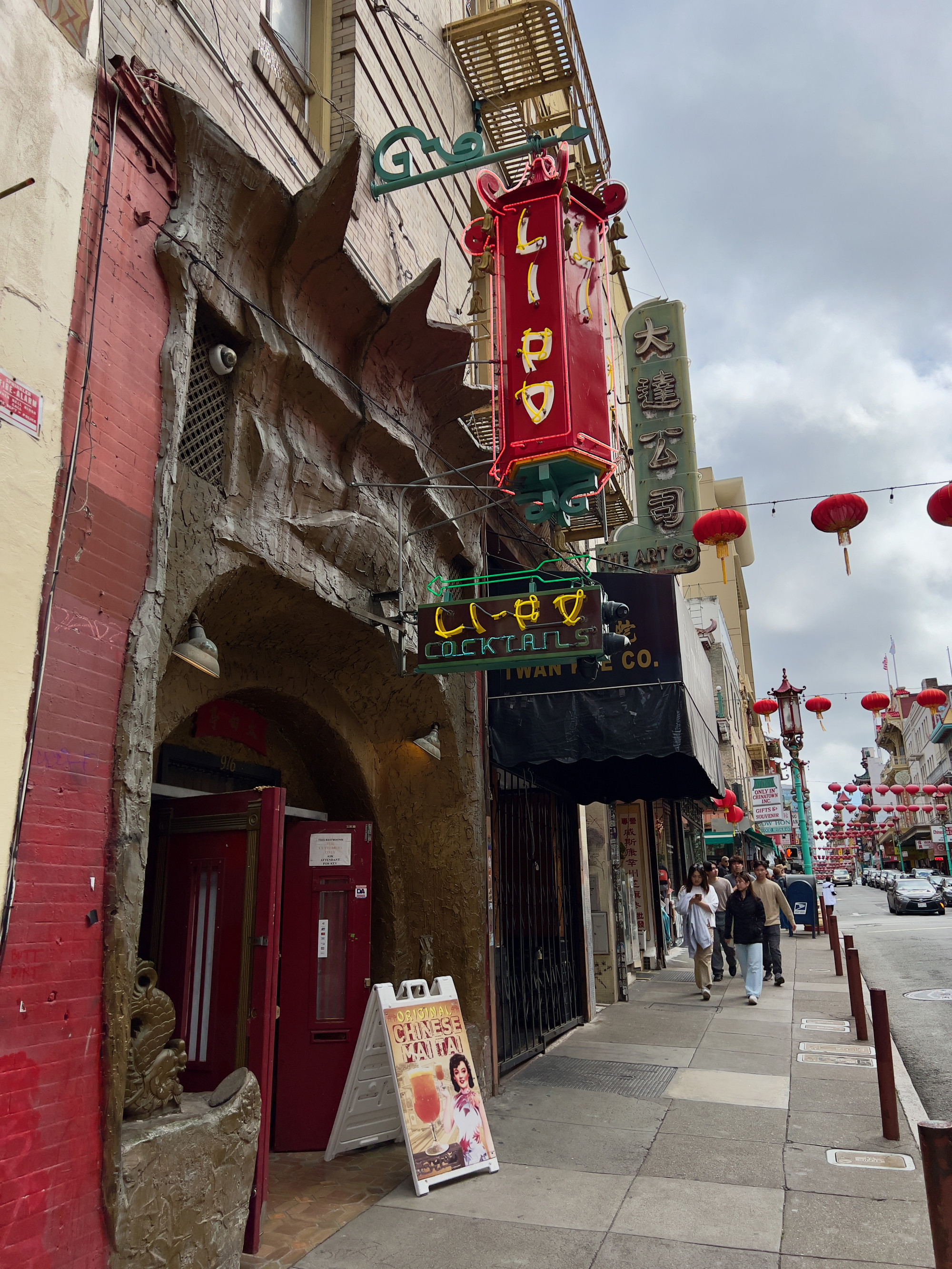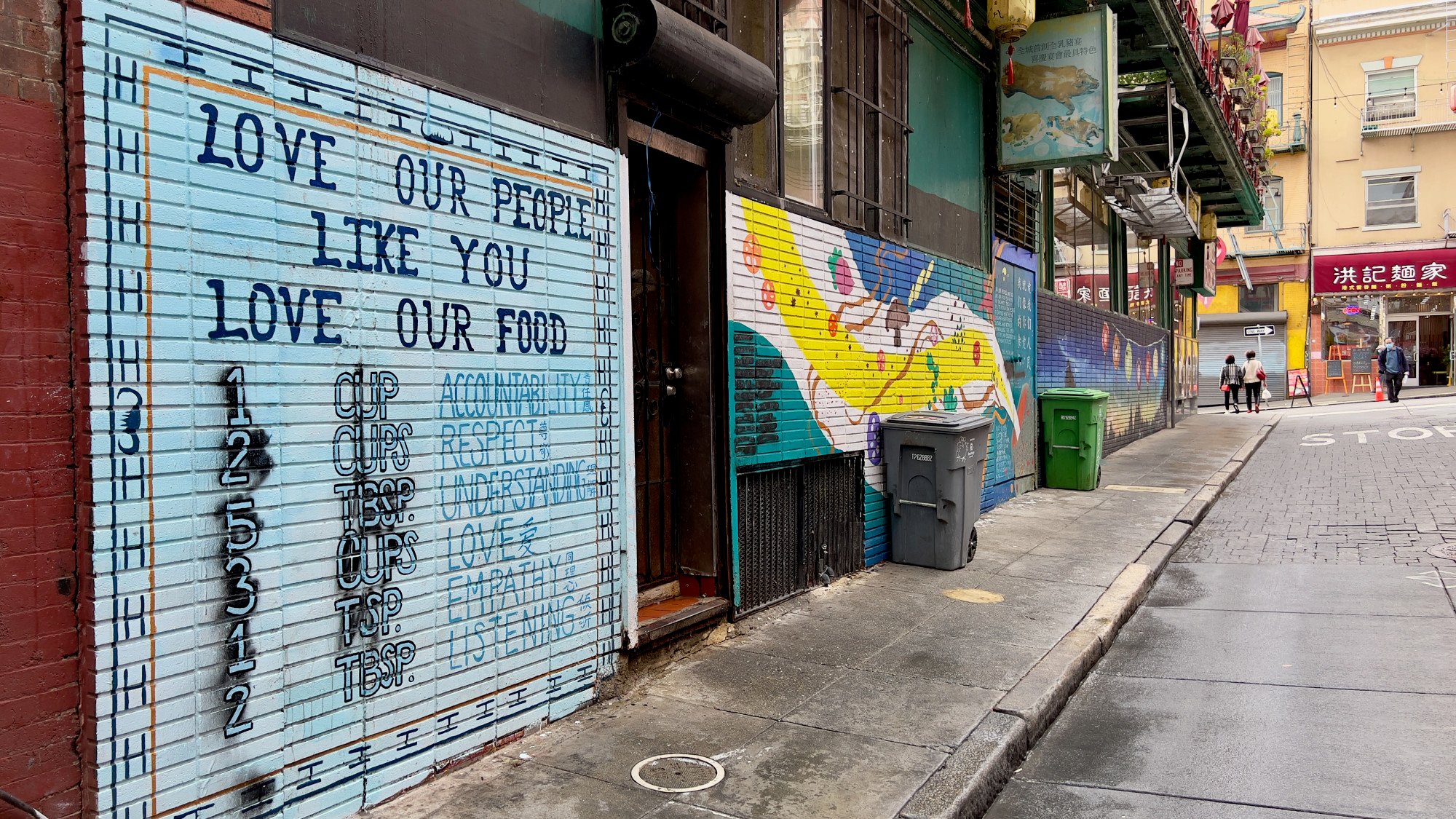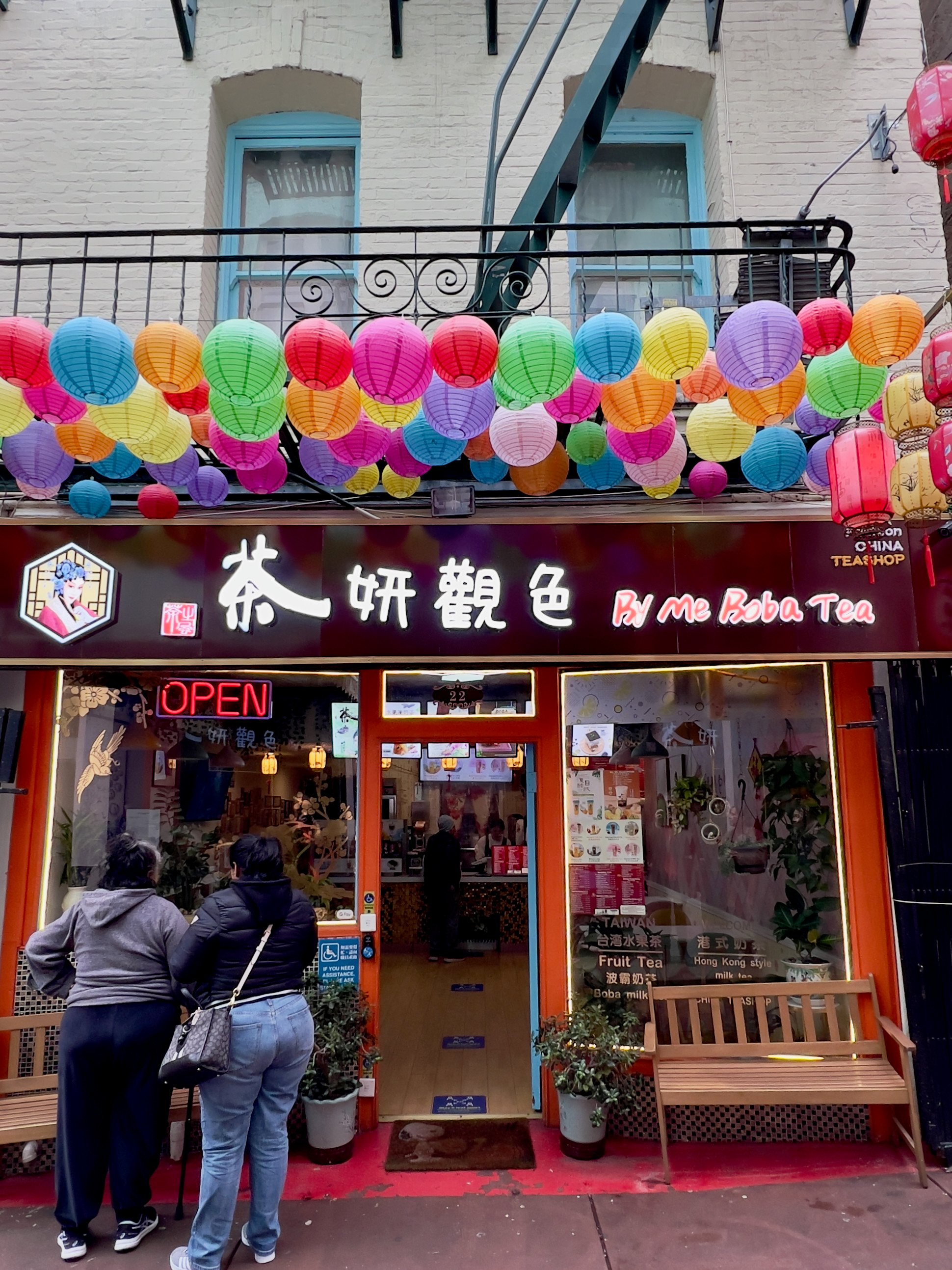
The original Chinatown, in San Francisco, reinvents itself through contemporary art and cuisine while preserving its intrinsically kitsch character
- San Francisco’s Chinatown remains one of the Californian city’s key attractions even to visitors from China, thanks to its blend of Chinese and American culture
- The Chinese Culture Centre helps visitors see past its kitschy architecture to its history of activism and anti-Asian violence, and presents contemporary art
If you have seen one Chinatown, you have seen them all: the same downmarket dim sum, the same strings of fading red lanterns across the streets and the same self-consciously Chinese kitsch on sale.
That’s because, while it has a layer of the alien – and many Americans get their ideas of Chinese culture there – Americana shows through, and the result is equally alien to most Chinese visitors.
Columns of Chinese characters may tumble down advertising signboards, but these are clamped to old brick buildings laced together with iron fire escapes, quite unlike anything seen in China.

There is a growing recognition that many of the enclave’s artfully Oriental features are specifically Chinese-American creations, developed in San Francisco and exported to Chinatowns elsewhere.
And while there is a desire to retain long-standing and profitable traditions, there is also a need to keep up with changing times, both in terms of what Chinatown is and in how it presents itself.

The Chinese Culture Centre (CCC) is buried in the base of the brutalist Hilton hotel, on the border of the financial district, with a bridge linking it physically to Portsmouth Square, Chinatown’s principal open space, and symbolically to the social activism that has often taken place there.
“I think Chinatowns are a destination,” says the centre’s executive director, Jenny Leung, “and particularly San Francisco’s because of its rich history. But there’s also civil rights activism that people don’t hear about.”

“The Chinese-American community was inspired by the civil rights movement,” says Leung, “and there wasn’t a space in the United States to show Chinese art and culture, so that’s primarily why the CCC was founded, but also to be able to act as a bridge and welcome visitors from all over to learn about the culture.”
The CCC offers tours that introduce Chinatown’s history of activism, beginning in Portsmouth Square, which is regarded as a living room by the 30,000 or so Chinatown residents who still live in single rooms – a legacy of the temporary housing built for miners during the Gold Rush of the 1850s.

Gentrification is swallowing many other Chinatowns whose land, once undesirable, is now valuably close to the centre of the cities that have grown around them. But, so far, San Francisco’s has maintained its warren of streets and alleys, against pressure to expand the financial district whose towers teeter at its edge.
“We had some artists from Hong Kong,” says our tour guide, “and they said, ‘You know, San Francisco Chinatown reminds me of how Hong Kong was in the ’70s.’”
Although the founding of Chinatown is dated to the arrival of three immigrants in 1848, it owes its modern form to the 1906 San Francisco earthquake, and the subsequent fires that swallowed up the area’s cheaply built shanties.

A canny California-born Chinese merchant called Look Tin Eli helped organise funds for rebuilding, and persuaded other merchants to hire architects with no knowledge of China to construct in a vaguely Sino style – a pastiche of half-understood Chinese traditions, executed in brick and concrete, and outrageously exotic for their time.
A classic of this type is in Grant Street, a red and green pagoda that was once a telephone exchange and is now a bank.
It is no more Chinese than the fortune cookies in Chinatown’s restaurants – invented by a Japanese-American in the early 20th century – or the lucky cat figurines that are a staple of its souvenir shops (Japanese in origin). But all represent an authentically anything-goes approach to business.
Look Tin Eli’s theme park approach drew in custom and was copied by Chinatowns across the Americas.

In Ross Alley, Chinatown’s oldest – once known for its gambling dens, opium parlours, prostitution and seamstresses working in ill-lit basements – the last producer of handmade fortune cookies attracts visitors, but there is also a new producer of bubble tea, and 41 Ross, a shopfront gallery that is an extension of the Chinese Culture Centre.
“You don’t come to Chinatown as a destination for contemporary art,” says head curator Candace Huey, “but here we’re trying to widen that perspective to give you a really fun and exciting way to learn about what it means to be American in the 21st century.”

What is authentically Chinese in America today, she says, is subjective to individuals and their personal histories. But Edge on the Square tries to find common narratives and common themes.
What is increasingly authentic is the food, because more recent arrivals from mainland China, failing to find something familiar, have begun to produce it themselves.
Chinatown’s reinvention of itself is something not only to see, but to taste.

